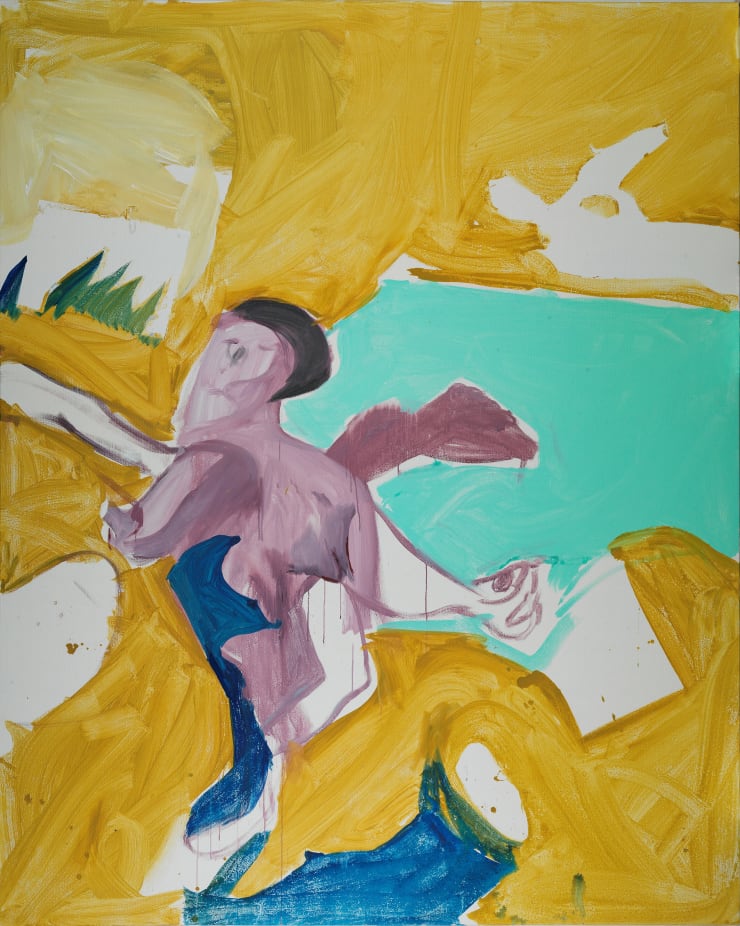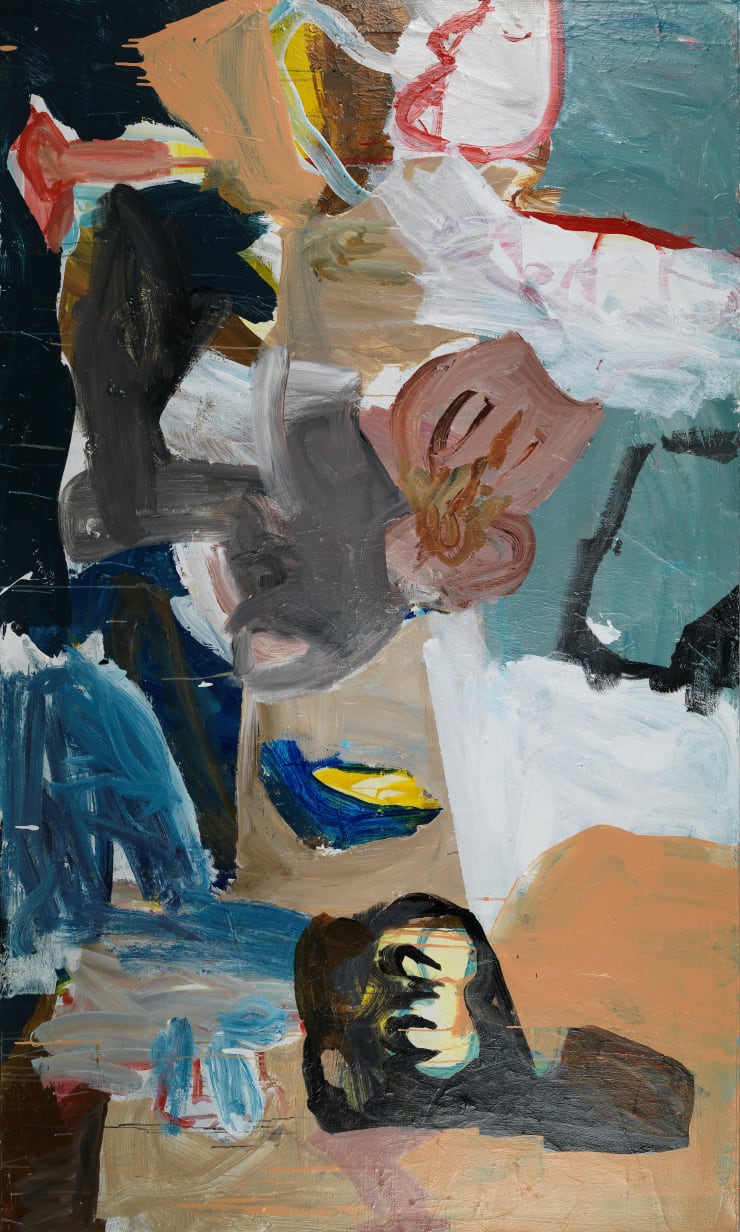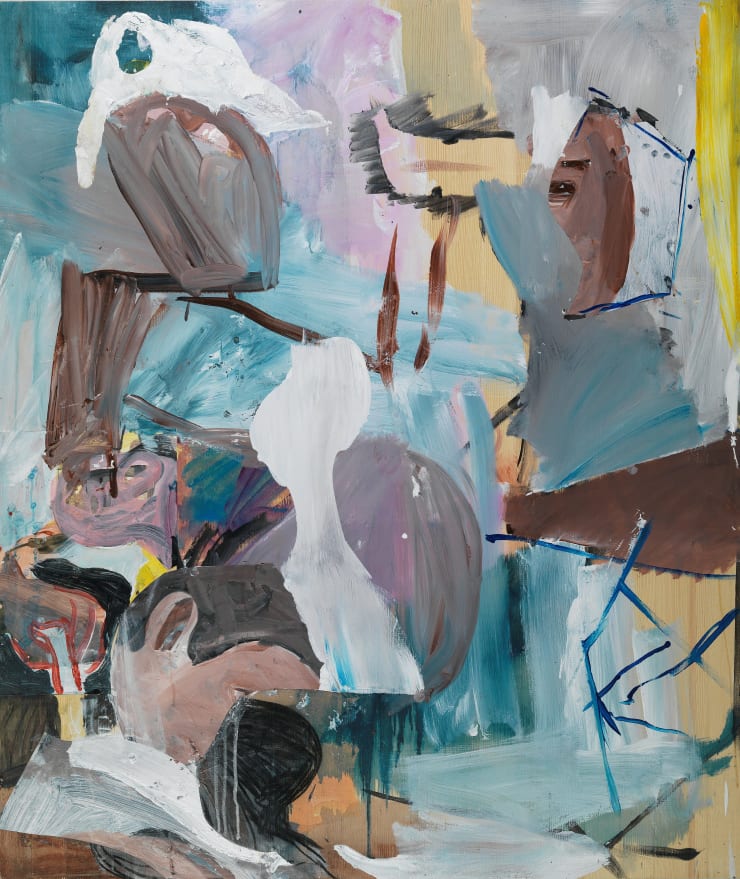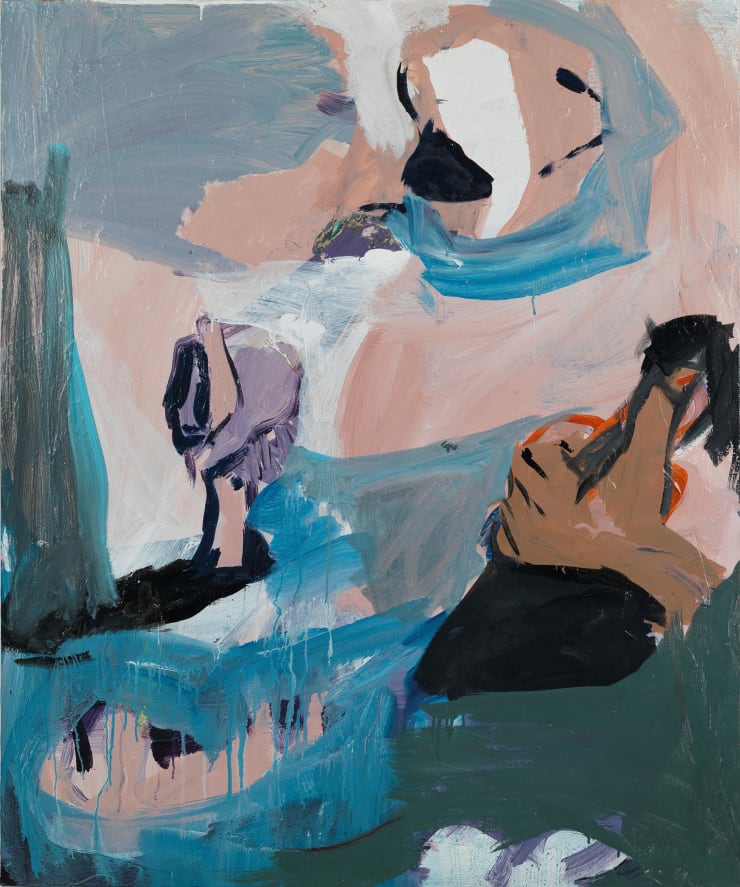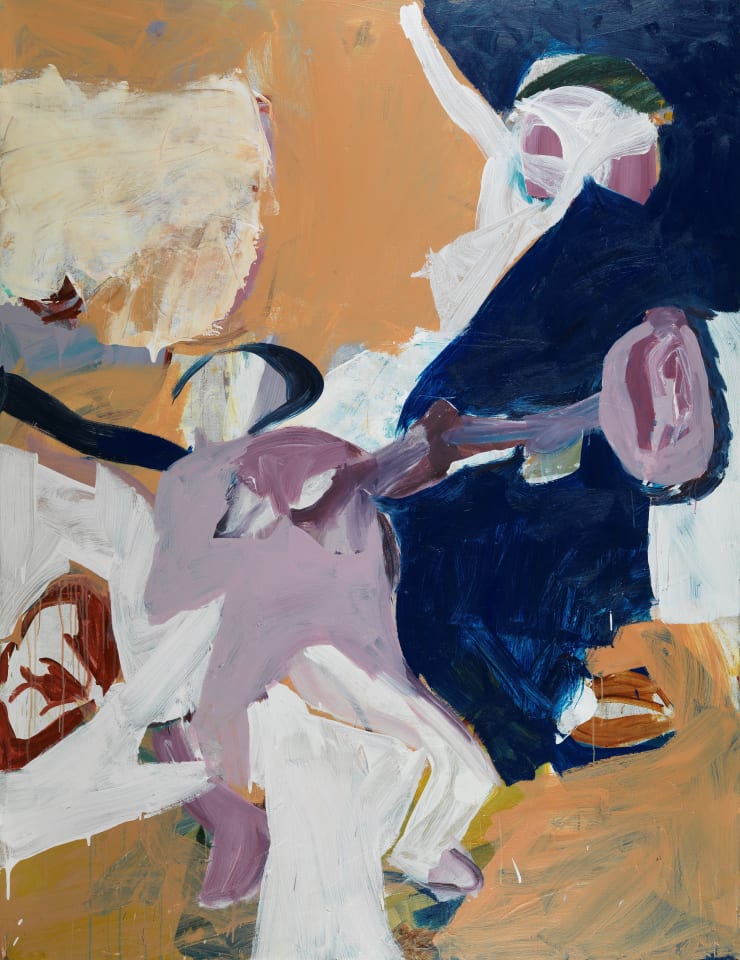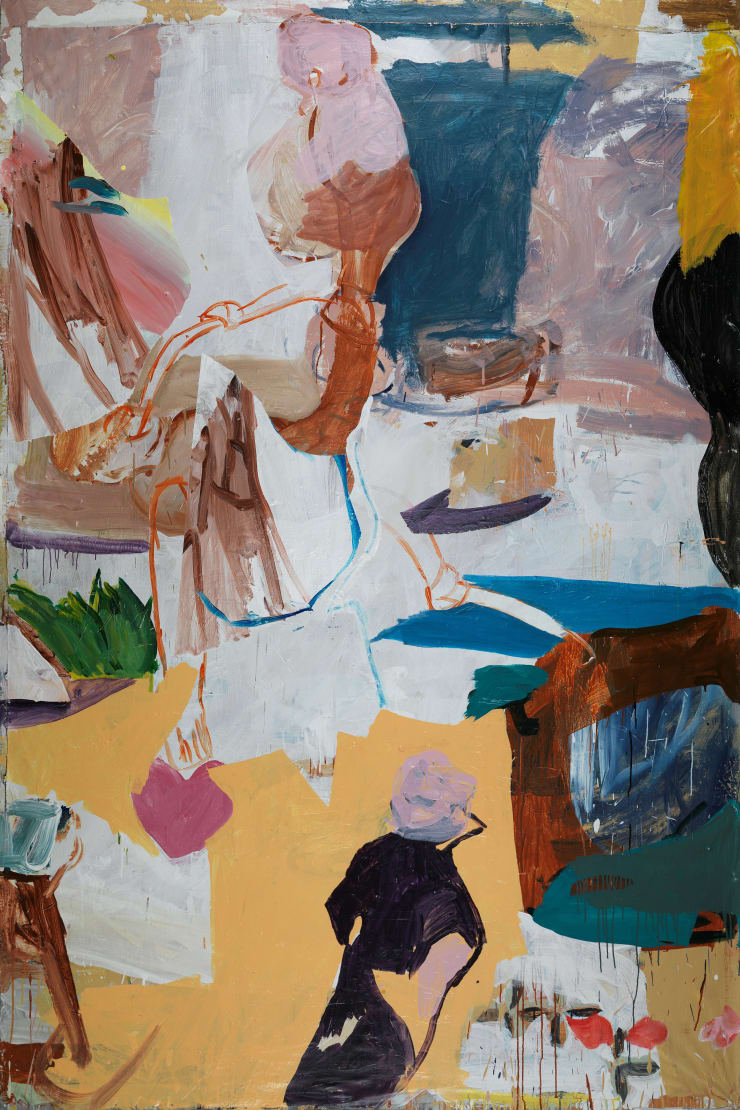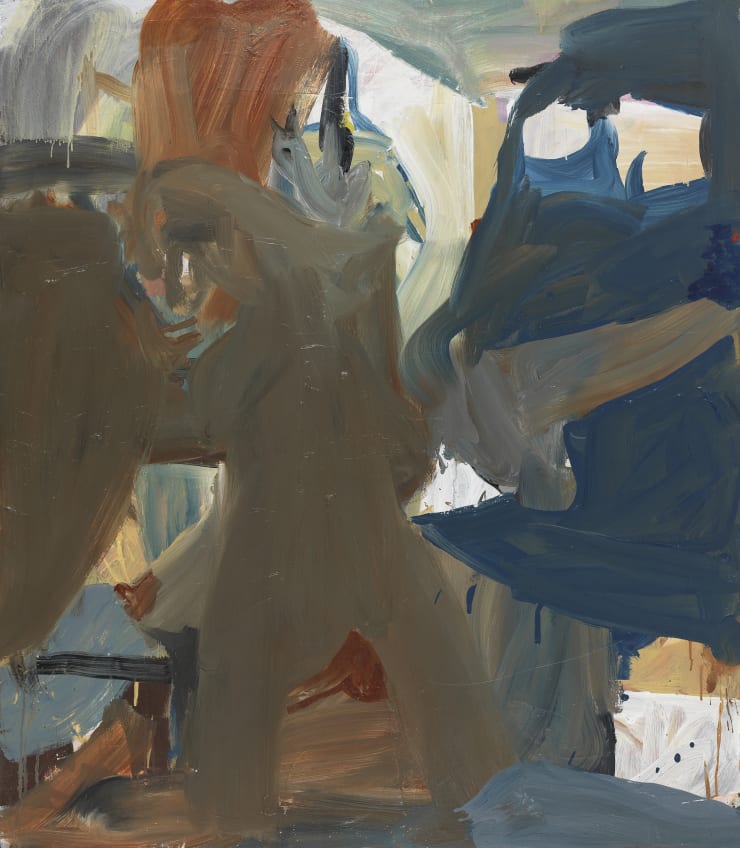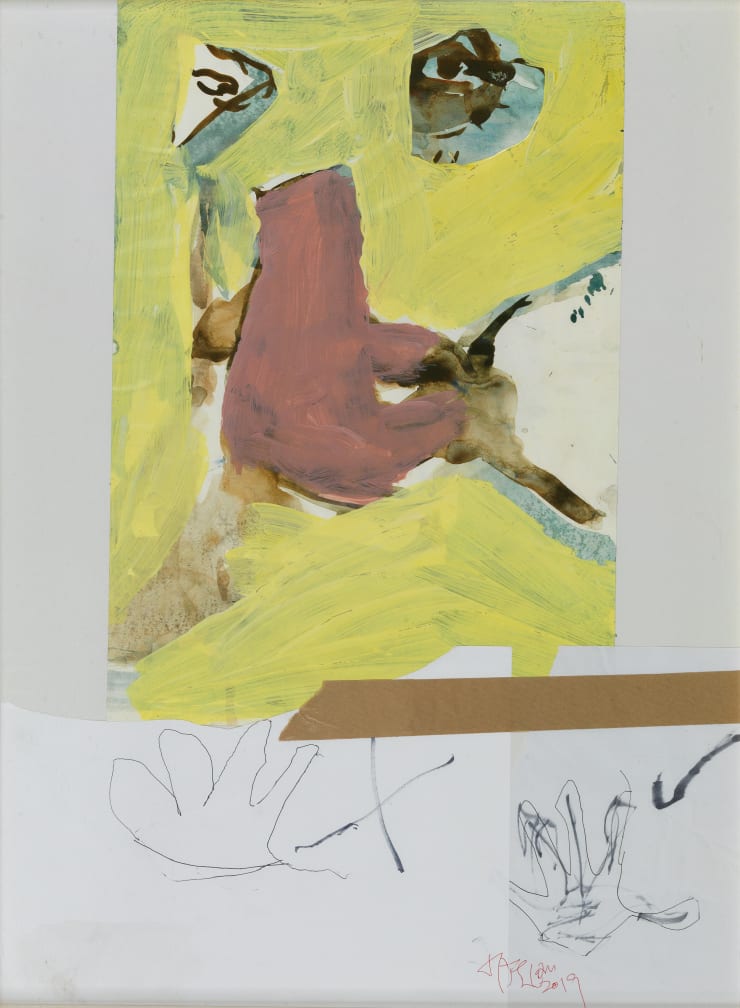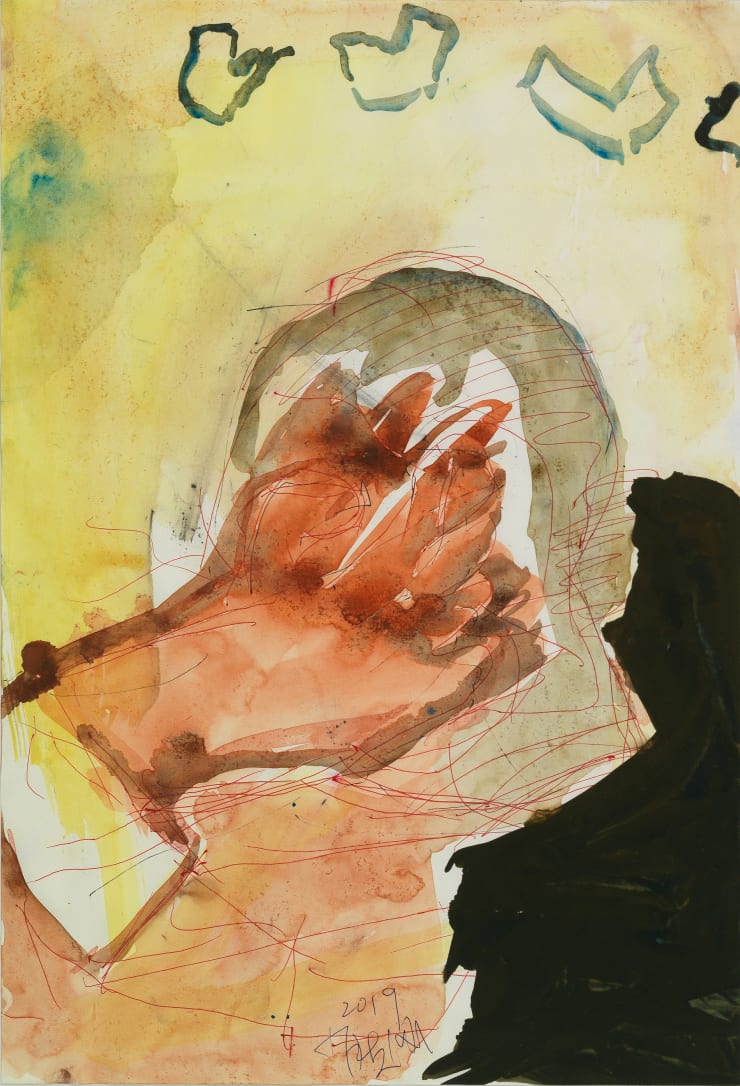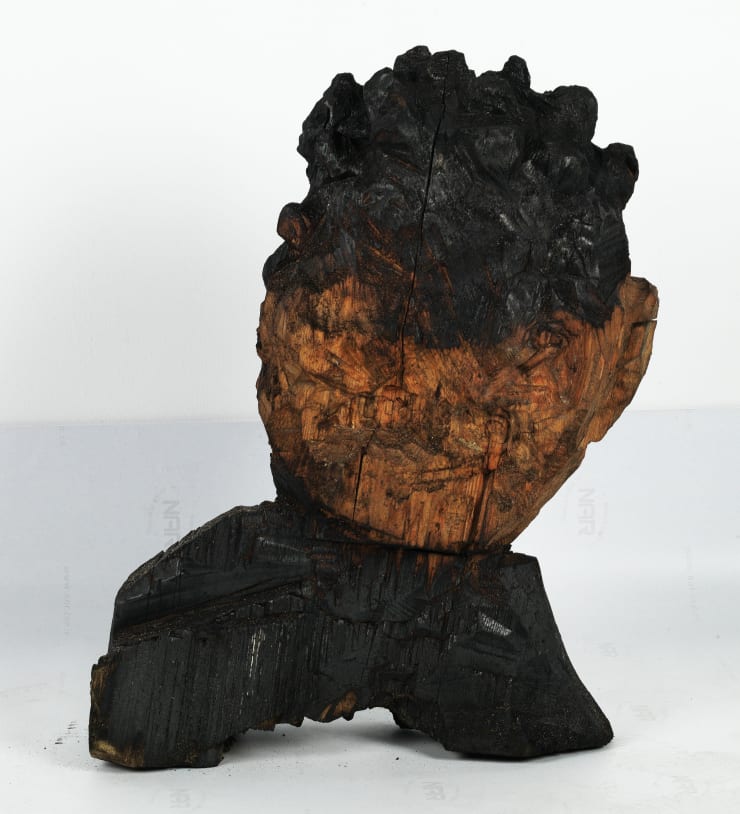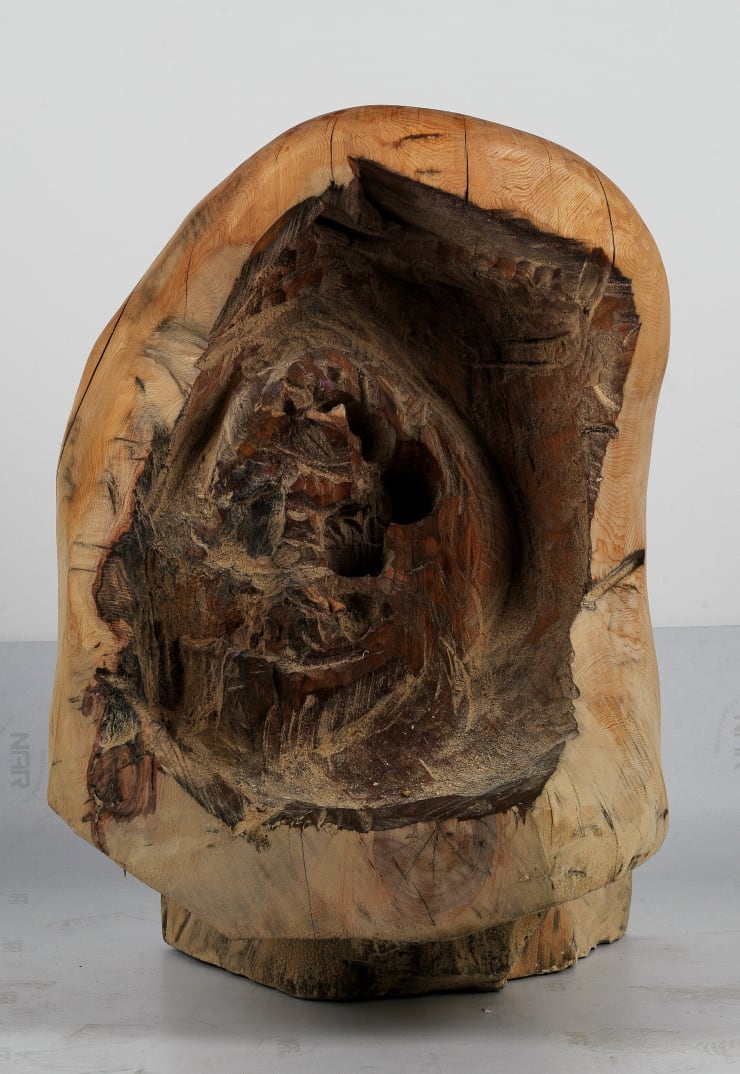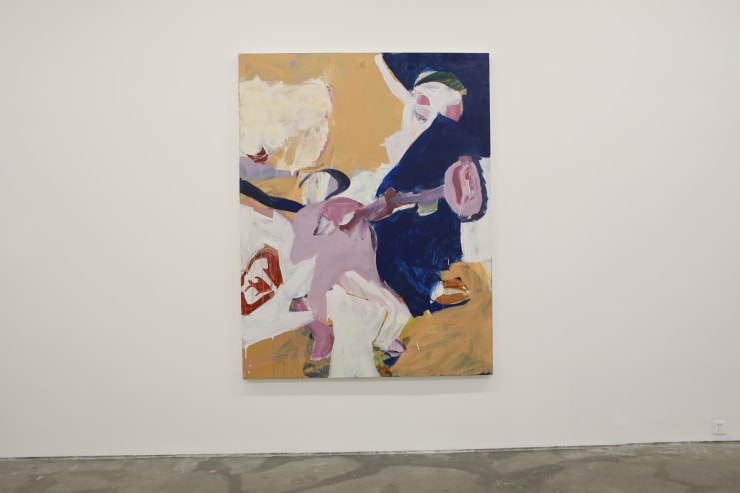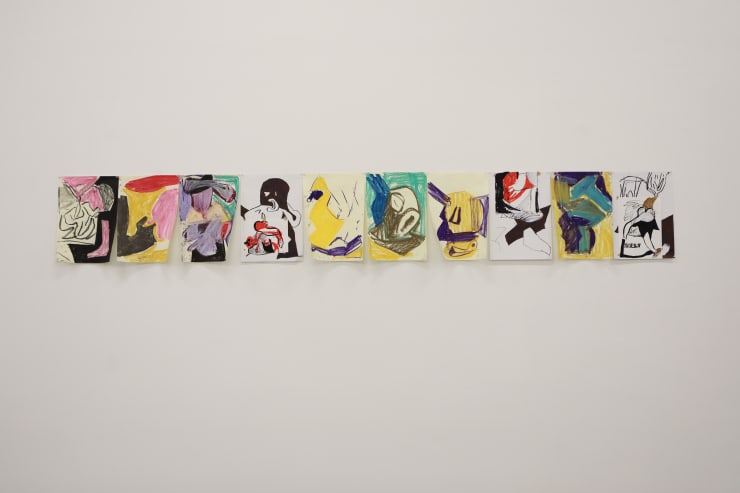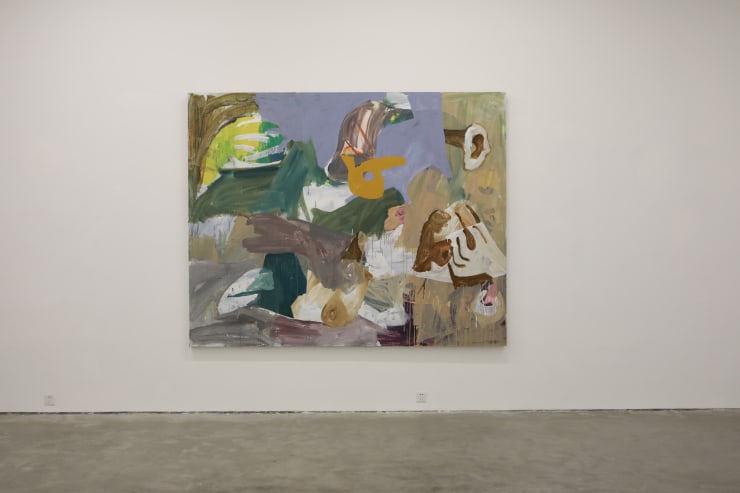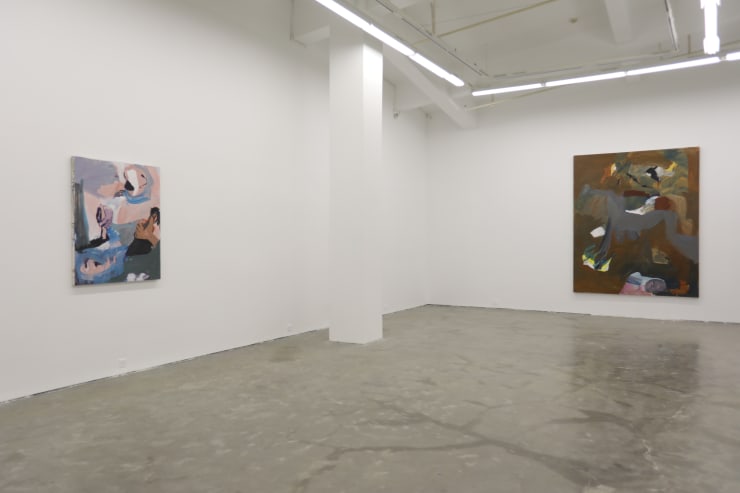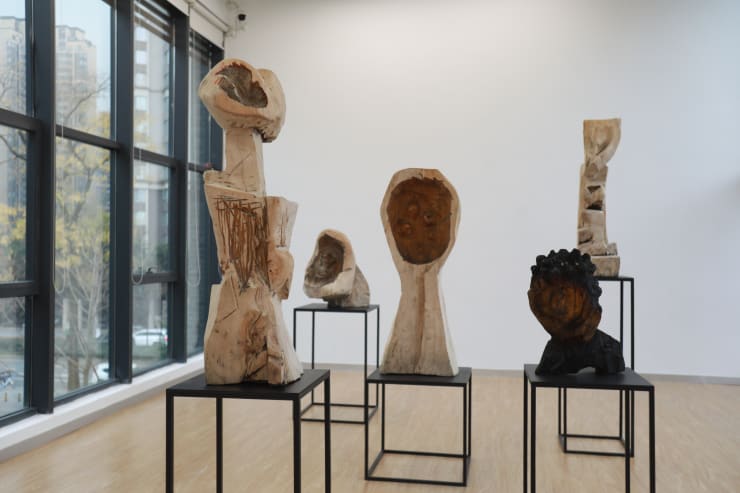Xiao Kegang:Anonymous
From December 28, 2019 to February 29, 2020, A Thousand Plateaus Art Space is pleased to present Xiao Kegang's solo exhibition “Anonymous”. On view are Xiao’s new works, including paintings and wooden installations, created in recent two years. Suggesting the implication of “anonymous”, the artist represents his visual study and spiritual experience by using different media and methods, obliquely and arbitrarily .
Anonymous: Recent Works by Xiao Kegang
by Lu Mingjun
Xiao Kegang didn’t know how many paintings he had abandoned in more than two years, leaving over twenty pieces so far. It is not because he seeks any severe requirement and standard for his works, on the contrary, there is no “destination” for him. Most of the time, he works with a skeptical status. The goal is not so much to finish a painting as to draw himself away from reality and thereby successively open up unknown physical spaces and spiritual worlds.Therefore, if the pictures cannot satisfy his eyes or his viewing experience, suddenly in a certain day or certain time, he would immediately discard or erase them, preferring to return to a blank (canvas).
Many years before, Xiao Kegang had tried to shape a relatively complete and realistic narrative scene and been acknowledged by peers and friends, but soon waived this path and returned to experiments on the form, space, and medium of painting per se. It made him more convinced that the closest thing to his body and spirit was not the image but the process of touching the canvas. Image might be an important inducement and starting point, however, his intention is not to portray an object. It is precisely in the process of "eliminating" the object, "disassembling" and "reorganizing" the image that he resort to feelings, experiences and reflections of self-conscious.
Even so, it is not difficult to find traces of Baselitz, Auerbach, Bacon and medieval paintings in his pictures, but among them, Xiao Kegang’s paintings still rely on instinct. Making the media self-sufficient is not his real intention and what he values more is the body's “arbitrariness” on the canvas. In the process, he hopes to tear through the spiritual exit through collision and combat with knowledge and experience. Although partial adjustments would be made sometimes, he never deliberately “run” a picture and every painting is like a voyage without a purpose. He retains traces and texture of flowing brush strokes but often alerts himself to fall into simple and crude emotion by handling hard-edge, flowing as a poetic plane composition. Thus the picture seems not to have a recognizable space and image, but at the same time, we can feel that space and image are everywhere. During this time, he tried to apply the technique of collage, so there are occasionally some sporadic colored paper. The collage destroys the original “integrity” of the picture. It looks like a game of covering and cutting but creates gaps and new spaces. For him, those gaps are tantamount to dark abyss. Considering that such method was too deliberate, he gave up the direct collage later, besides, the medium of painting alone could achieve the same goal. Native patterns, words and sculptures of Yi group from Liang Mountain give him new inspiration. What attracts him are not only these unknowable images, but also the magic and energy that they originally have. The set of woodcarvings of his recent works largely benefits from these mysterious experiences and perceptions. Here, such form of "arbitrariness” becomes an “absurd” spiritual adventure for him.
Xiao Kegang is often in a staged dilemma. Once he was diagnosed as panic disorder. Patients with panic disorder are often accompanied by a strong sense of dying or out of control. Their fear of unfortunate consequences can trigger acute anxiety and tension at any time. Hence, painting at in this case becomes a way for Xiao Kegang to relieve mental anxiety. Those “controless” strokes and weightless “images” in the picture are not a depiction or representation of his panic disorder, but might be an appropriate entrance point into his picture.
Xiao Kegang named his works in recent two years “Anonymous”, which is different from the “Untitled” that commonly used by artists. “Untitled” means no name or unwilling to be named, while “Anonymous” means originally named but simply unwilling to sign or not sign the real name, that is, concealing identity, personality, or not identifying yourself. That not only means the original differences among works, but also reminds us that these works also represent the different moment of life and spirit. In recent years, Xiao Kegang has been nesting in the suburb of Chengdu. He rarely enters the city and travels outside Sichuan province even less. He is always keeping a distance from the art circle and the real world. Like the “randomly haunted” ghosts in his paintings, he prefers to be an anonymous person, living alone in his own small world. In the network terminal, everyone, as the user, might becomes anonymous. Paradoxically, there is in essence no anonymous in the Internet Age.
-
 肖克刚 Xiao Kegang, 匿名2019 No.3 | Anonymous 2019 No.3, 2019
肖克刚 Xiao Kegang, 匿名2019 No.3 | Anonymous 2019 No.3, 2019 -
 肖克刚 Xiao Kegang, 匿名2019 No.1 | Anonymous 2019 No.1, 2019
肖克刚 Xiao Kegang, 匿名2019 No.1 | Anonymous 2019 No.1, 2019 -
 肖克刚 Xiao Kegang, 匿名2019 No.4 | Anonymous 2019 No.2, 2019
肖克刚 Xiao Kegang, 匿名2019 No.4 | Anonymous 2019 No.2, 2019 -
 肖克刚 Xiao Kegang, 匿名2019 No.4 | Anonymous 2019 No.4, 2019
肖克刚 Xiao Kegang, 匿名2019 No.4 | Anonymous 2019 No.4, 2019 -
 肖克刚 Xiao Kegang, 匿名2019 No.4 | Anonymous 2019 No.4, 2019
肖克刚 Xiao Kegang, 匿名2019 No.4 | Anonymous 2019 No.4, 2019 -
 肖克刚 Xiao Kegang, 匿名2019 No.5 | Anonymous 2019 No.5, 2019
肖克刚 Xiao Kegang, 匿名2019 No.5 | Anonymous 2019 No.5, 2019 -
 肖克刚 Xiao Kegang, 匿名2019 No.6 | Anonymous 2019 No.6, 2019
肖克刚 Xiao Kegang, 匿名2019 No.6 | Anonymous 2019 No.6, 2019 -
 肖克刚 Xiao Kegang, 匿名2019 No.7 | Anonymous 2019 No.7, 2019
肖克刚 Xiao Kegang, 匿名2019 No.7 | Anonymous 2019 No.7, 2019 -
 肖克刚 Xiao Kegang, 匿名2019 No.8 | Anonymous 2019 No.8, 2019
肖克刚 Xiao Kegang, 匿名2019 No.8 | Anonymous 2019 No.8, 2019 -
 肖克刚 Xiao Kegang, 匿名2019 No.9 | Anonymous 2019 No.9, 2019
肖克刚 Xiao Kegang, 匿名2019 No.9 | Anonymous 2019 No.9, 2019 -
 肖克刚 Xiao Kegang, 无题2019 No.10 | 无题2019 No.10, 2019
肖克刚 Xiao Kegang, 无题2019 No.10 | 无题2019 No.10, 2019 -
 肖克刚 Xiao Kegang, 无题2019 No.2 | Untitled 2019 No.2, 2019
肖克刚 Xiao Kegang, 无题2019 No.2 | Untitled 2019 No.2, 2019 -
 肖克刚 Xiao Kegang, 无题2019 No.3 | Untitled 2019 No.3, 2019
肖克刚 Xiao Kegang, 无题2019 No.3 | Untitled 2019 No.3, 2019 -
 肖克刚 Xiao Kegang, 无题2019 No.5 | Untitled 2019 No.5, 2019
肖克刚 Xiao Kegang, 无题2019 No.5 | Untitled 2019 No.5, 2019 -
 肖克刚 Xiao Kegang, 无题2019 No.6 | 无题2019 No.6, 2019
肖克刚 Xiao Kegang, 无题2019 No.6 | 无题2019 No.6, 2019 -
 肖克刚 Xiao Kegang, 无题2019 No.7 | 无题2019 No.7, 2019
肖克刚 Xiao Kegang, 无题2019 No.7 | 无题2019 No.7, 2019 -
 肖克刚 Xiao Kegang, 无题2019 No.8 | 无题2019 No.8, 2019
肖克刚 Xiao Kegang, 无题2019 No.8 | 无题2019 No.8, 2019 -
 肖克刚 Xiao Kegang, 无题2019 No.9 | 无题2019 No.9, 2019
肖克刚 Xiao Kegang, 无题2019 No.9 | 无题2019 No.9, 2019

